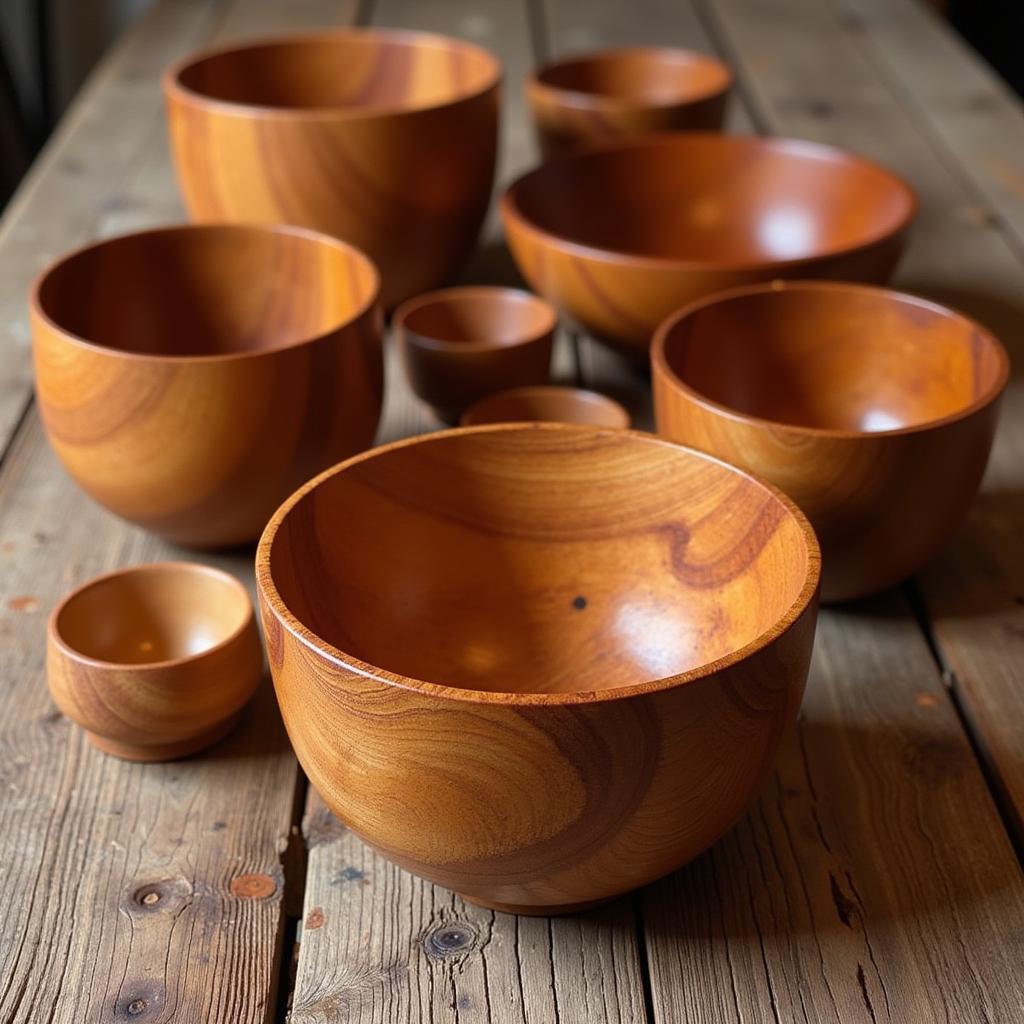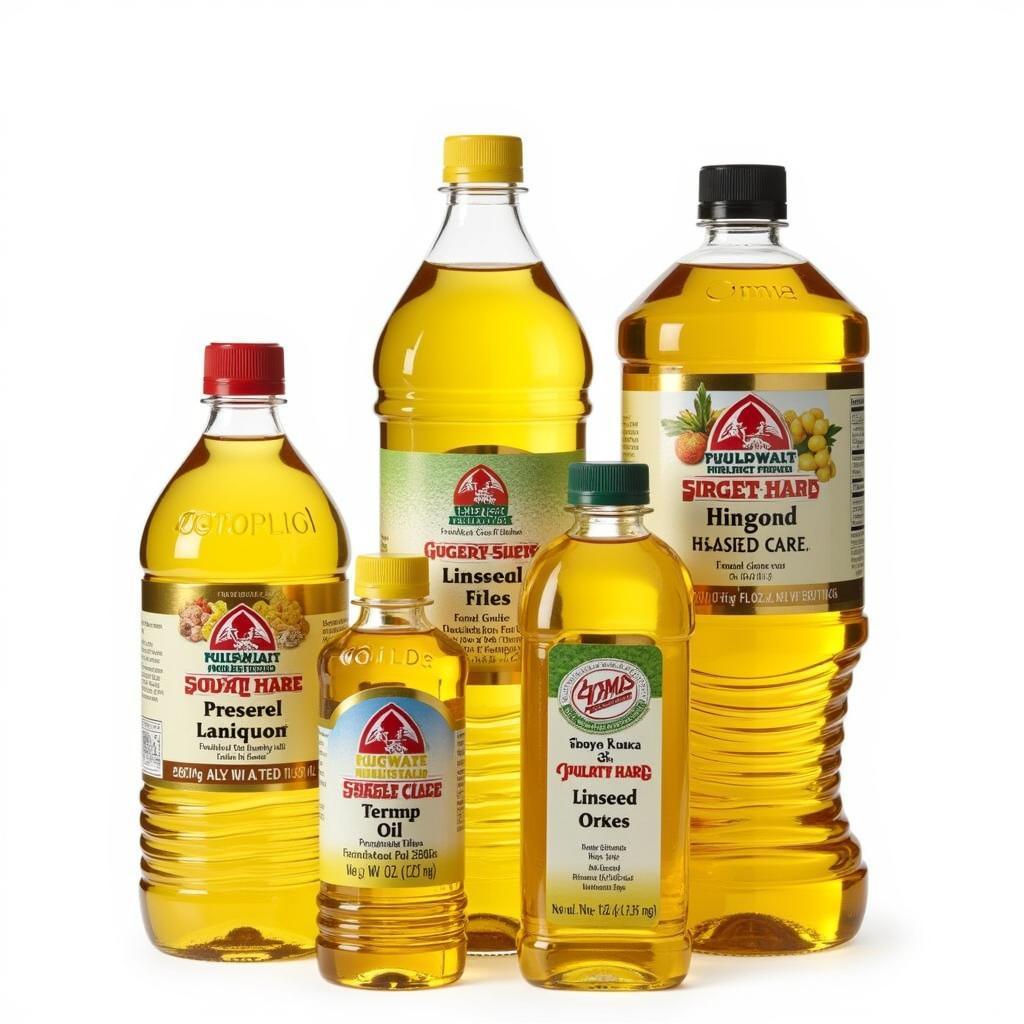Food Safe Linseed Oil is a topic that often sparks confusion, especially for those new to woodworking or culinary crafts. While linseed oil itself is a natural product derived from flax seeds, not all linseed oil is safe for contact with food. This guide will delve into the intricacies of food safe linseed oil, exploring its uses, benefits, and how to ensure you’re choosing the right product for your needs. Find out how to confidently use this versatile oil for your food-related projects.
Understanding Food Safe Linseed Oil
So, what exactly makes linseed oil “food safe”? Pure, raw linseed oil isn’t inherently unsafe, but it dries very slowly. To speed up the drying process, manufacturers often add metallic dryers, which are not suitable for food contact. Food safe linseed oil, on the other hand, is typically treated without these dryers, or with dryers that are deemed safe for incidental food contact. This is crucial for items like wooden cutting boards, bowls, and utensils. It’s important to look for labels that explicitly state “food safe” or “for food contact.” Don’t be fooled by terms like “boiled linseed oil,” which usually contains metallic dryers.
Choosing the right finish for your charcuterie board can be tricky, and knowing if certain oils are food-safe is key. You can learn more about suitable food safe finishes for charcuterie boards on our website.
Remember, using the wrong type of linseed oil can contaminate your food and pose health risks. Always double-check the label to ensure you are using a food safe product.
Choosing the Right Food Safe Linseed Oil
With so many options on the market, navigating the world of food safe linseed oil can feel overwhelming. Here are some key factors to consider:
- Purity: Look for 100% pure linseed oil with no additives or thinners.
- Labeling: The label should clearly state “food safe,” “for food contact,” or similar wording.
- Type of Drying Agent: If the oil uses a drying agent, ensure it is a food-safe variety.
- Reputation of the Brand: Opt for reputable brands known for producing high-quality, food-safe finishes.
Applying Food Safe Linseed Oil
Proper application is key to maximizing the benefits of food safe linseed oil. Here’s a step-by-step guide:
- Preparation: Ensure the surface is clean and dry.
- Application: Apply a thin, even coat of oil using a clean cloth or brush.
- Drying: Allow the oil to dry completely before applying another coat. This may take several hours or even overnight.
- Repeat: Apply multiple thin coats, allowing each coat to dry completely. This builds up a protective layer.
- Maintenance: Regularly reapply food safe linseed oil to maintain the finish and protect the wood.
 Applying food safe linseed oil to a wooden cutting board
Applying food safe linseed oil to a wooden cutting board
Are you wondering if Watco Danish Oil is safe for food contact? We have a dedicated article addressing this question, providing you with all the information you need about the food safety of Watco Danish Oil.
Benefits of Using Food Safe Linseed Oil
Food safe linseed oil offers several benefits, making it a popular choice for food-related projects:
- Natural Protection: It creates a barrier against moisture and bacteria.
- Enhances Wood Grain: It brings out the natural beauty of the wood.
- Easy Application: It’s simple to apply and maintain.
- Food Safe: It’s safe for contact with food when properly applied and cured.
 Food safe linseed oil finished wooden bowls
Food safe linseed oil finished wooden bowls
Common Questions About Food Safe Linseed Oil
Is all linseed oil food safe? No, not all linseed oil is food safe. Ensure the label specifically states “food safe” or “for food contact.”
How often should I reapply food safe linseed oil? Reapply as needed, depending on the usage and wear of the item. A good rule of thumb is every few months or when the wood starts to look dry.
Can I use food safe linseed oil on any type of wood? Yes, food safe linseed oil can be used on most types of wood suitable for food contact.
You might also be interested in exploring other food-safe oil options like Danish oil. Check out our article on food safe Danish oil for more information.
 Variety of food safe linseed oil bottles
Variety of food safe linseed oil bottles
Conclusion
Food safe linseed oil is a valuable asset for anyone working with wood and food. By understanding the key aspects of choosing and applying it correctly, you can protect your woodenware and ensure food safety. Remember to always check labels and follow manufacturer instructions.
FAQs
- What is the difference between boiled linseed oil and food safe linseed oil?
- How do I know if my linseed oil is food safe?
- Can I use food safe linseed oil on children’s toys?
- What are the alternatives to food safe linseed oil?
- How long does food safe linseed oil last?
- How do I clean surfaces treated with food safe linseed oil?
- Where can I buy food safe linseed oil?
For any assistance, please contact us at Phone: 02437655121, Email: [email protected] Or visit us at: 3PGH+8R9, ĐT70A, thôn Trung, Bắc Từ Liêm, Hà Nội, Việt Nam. We have a 24/7 customer service team.